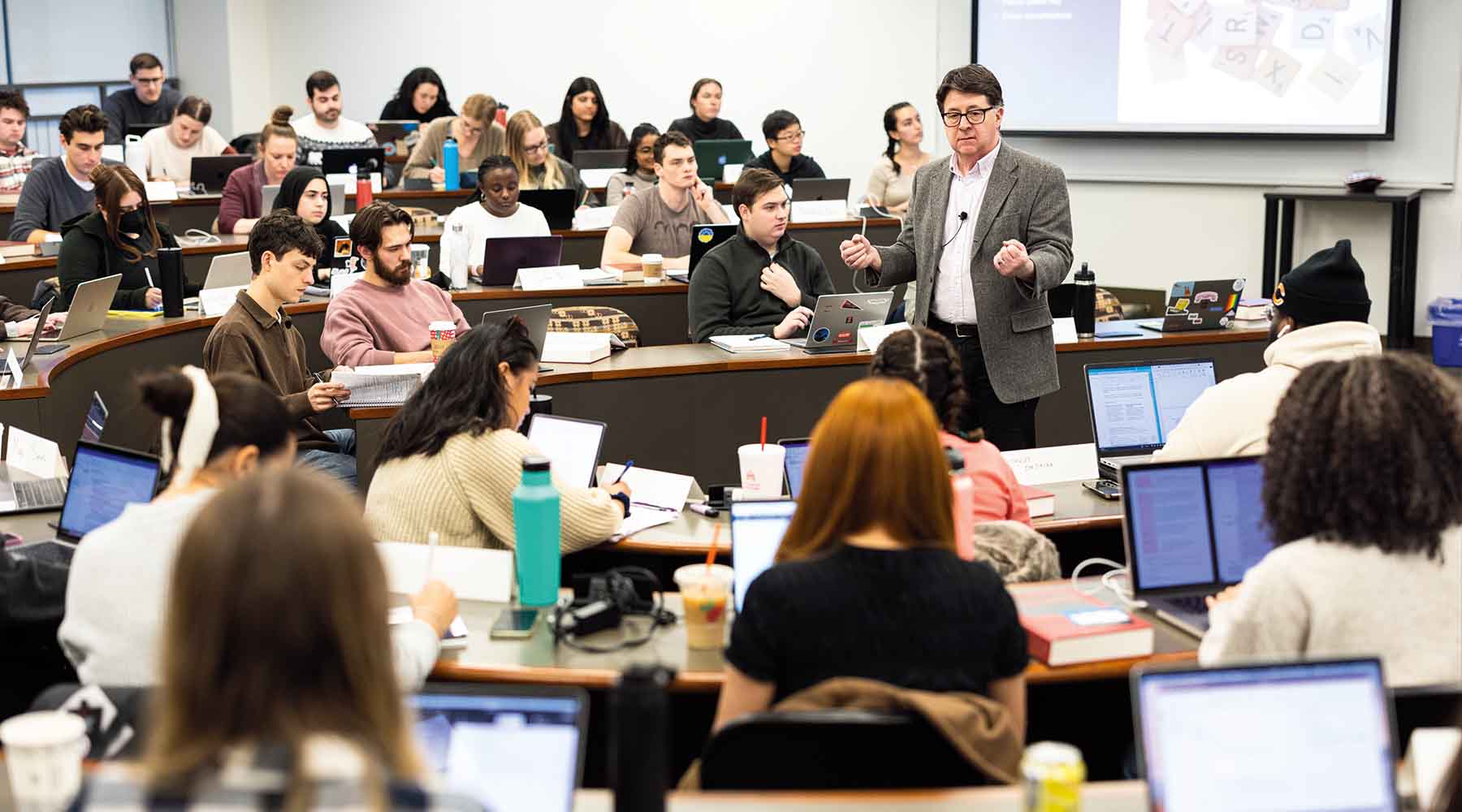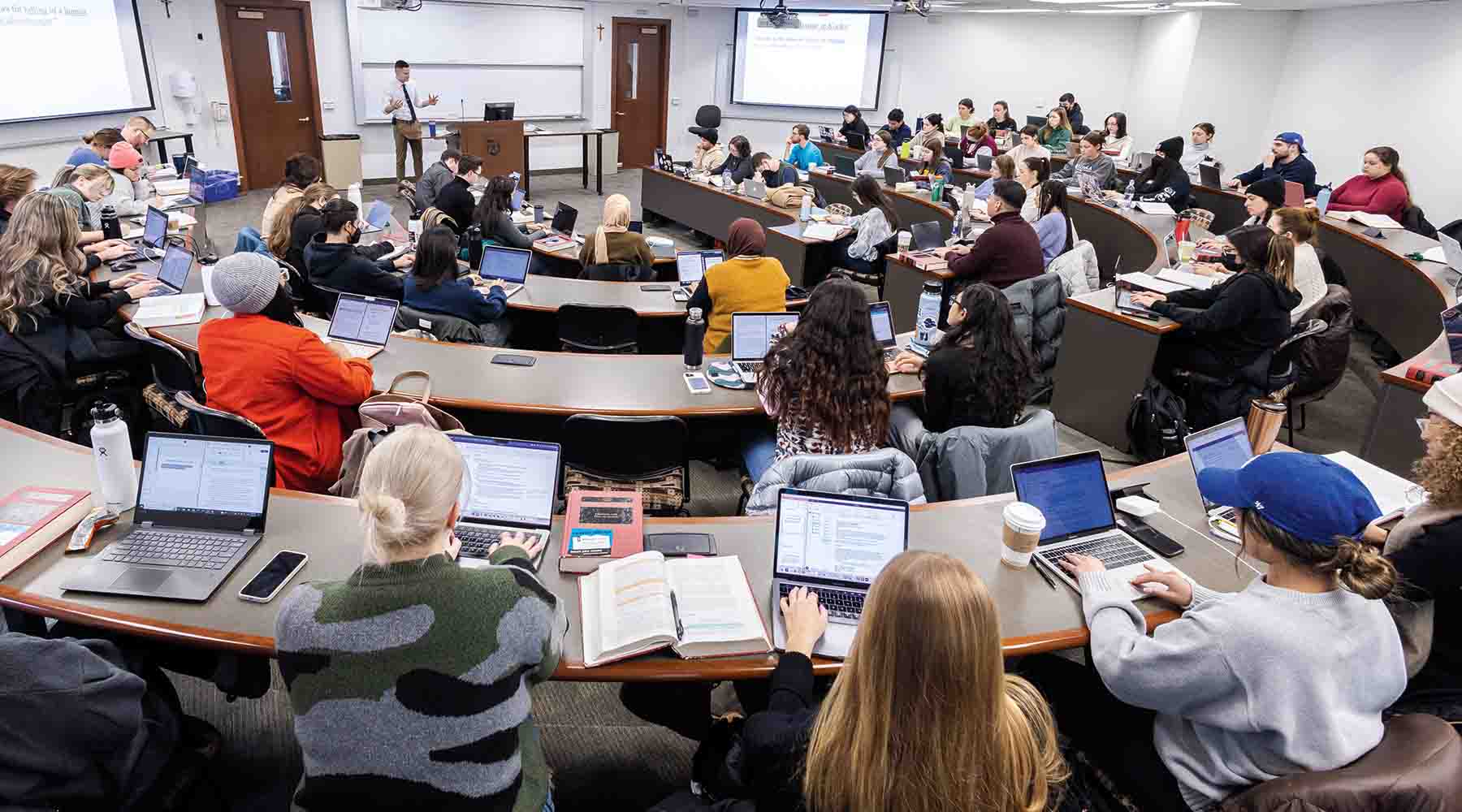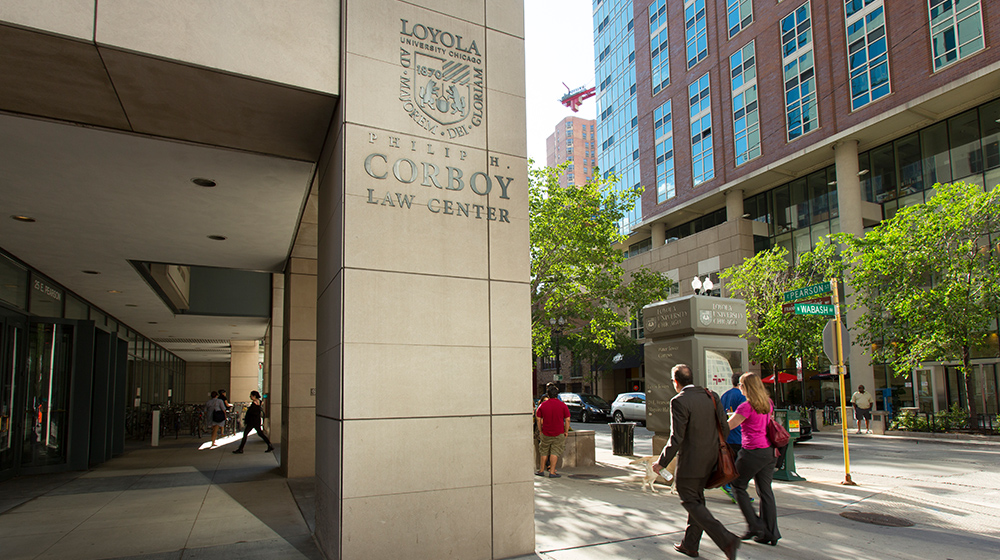FACULTY PROFILE Katherine Kaufka Walts
Providing vital insights
Katherine Kaufka Walts coauthors first comprehensive examination of child labor trafficking in the U.S.
A new study coauthored by Loyola University Chicago School of Law’s Center for the Human Rights of Children’s Katherine Kaufka Walts and Chlece Neal (MSW/JS ’13, MS ’18) is the first comprehensive examination of child labor trafficking in the United States.
“Understanding the Trafficking of Children for the Purposes of Labor in the United States,” supported by the National Institute of Justice, explores how labor trafficking impacts a wide range of children who experience individual and structural vulnerabilities. It also explores the contexts under which these abuses occur, and how to best meet the needs of these young survivors—both U.S. citizen and foreign-national.
Here, Kaufka Walts, director of the Center for the Human Rights of Children (CHRC) and clinical professor of law, answers questions about the report.
Why did you want to become involved in this project?
When I first started practicing law as an immigration and human rights attorney, many of my clients were child labor trafficking victims—working in people’s homes as domestic servants, working restaurants, factories, and on farms. Some were forced into criminal acts, like carrying drugs or theft. I observed that most first responders and systems—including law enforcement, child protection, educators, and immigration officials—didn’t really understand or know about labor trafficking, even if was part of our anti-trafficking laws. The dominant perception was that human trafficking is (only) sex trafficking. The dearth of research on this topic made it difficult to advance policy and legislation to better support child labor trafficking survivors.
I was thrilled for the opportunity to collaborate—with a cohort of nationally renowned researchers and experts in law, crime victimization, human trafficking, and children and youth—to address this gap in research. Moreover, the design of the research project included survivor voices, a critical and often neglected perspective in similar studies. I hope that the data and findings of this project can be used to improve outcomes for child survivors of trafficking, and also honor the resilience of children who experience labor trafficking.
What do you think are the most important findings in the report?
Unlike child sex trafficking, child labor trafficking requires the proof of some elements of “force,” “fraud,” or “coercion.” Our current anti-trafficking laws do not take into account the developmental differences between children and adults when analyzing these legal standards, such as what is “coercive” behavior to compel labor or services. Stakeholders and adjudicators often assume a child’s capacity to assess risk is the same as an adult. Often, a child or adolescent will do what an adult tells them, even if against their interests or in violation of the law, because they are wholly dependent on that adult for their survival, including shelter, food, affection and other forms of support.
When people think about the profile of a trafficker, they often think of “Stranger Danger” or organized crime, which is a huge misnomer. Our study showed that the majority of recruiters and traffickers were someone the child knew, including family members and acquaintances. There were also “noncriminal” organized groups, such as cults and sports teams.
People often think of child labor trafficking as a migrant issue. What does the report show?
Our study casts light on the diverse victim profile, which is 42% U.S. citizens and 58% foreign nationals. These victims were ensnared in a broad spectrum of industries, from domestic work to forced criminality, entertainment, factory work, and agriculture. Both male (38%) and female (59%) victims were identified, with an average age of 14. Some of the overlapping characteristics/vulnerabilities of both cohorts of children are poverty, lack of social support networks, lack of affordable housing, and their age/youth and developmental capacity. Migrant children are uniquely vulnerable to labor trafficking as their lack of immigration status and work authorization makes them more susceptible to exploitive practices.
In one interview with a child advocate working with child labor trafficking victims, they stated, “They [child] either don’t have a place to stay or home is not safe, and they’re being offered safety and love and community by other people who are meeting the needs that every kid had. Then [the trafficker] kind of turning on a, ‘Well, I need you to do this,’ ‘I need you to help out,’ or making them feel like they’re a part of something.”
Based on the findings, what can first responders do to more effectively address the problem of child labor trafficking?
Our study shows that traffickers often threatened to report children to child protection and law enforcement as a means to compel children to engage in exploitative labor practices. The fact that the systems that are designed to “help” child victims of crime and abuse are perceived as more harmful than the labor trafficking children endure is a profound statement about these systems.
Many states have laws that protect child sex trafficking victims from being penalized for engaging in commercial sex acts, which is in line with federal anti-trafficking legislation. We recommend that states review their laws to ensure child labor trafficking victims are also included in these protections.
Many first responders and trafficking experts are focused solely on sex trafficking. For example, only 15% of child labor trafficking cases were identified by law enforcement in civil or criminal systems. We must provide additional training to all stakeholders who engage with children on child labor trafficking. This includes education/schools, law enforcement, immigration officials, child welfare systems, juvenile justice systems, and labor inspectors.
Three vulnerabilities were consistent across all victim profiles: lack of stable or safe housing, poverty, and lack of access to lawful and safe employment (migrant) to be economically sustained. To me, these are all issues that can be addressed with proper allocation of resources and policies. In other words, child trafficking is preventable.
What else would you like to share about the work of the Center for the Human Rights of Children and the School of Law?
Given that our modern-day human trafficking laws are derived from the crime of involuntary servitude and the abolition of slavery, it is critical to study contemporary trafficking and exploitation of human beings as an extension of both systemic subjugation and individual vulnerabilities. This includes both labor and sex trafficking. This is directly in line with our law school’s mission.
Most university human trafficking courses focus on one type of trafficking: sex trafficking. I teach an interdisciplinary seminar that that incorporates law and research addressing both labor and sex trafficking. Many of my seminar students work with me to conduct research and advocacy on trafficking of children. This includes participating in research studies such as this, drafting and reviewing legislation, and submitting expert reports to the United Nations.
The Center for the Human Rights of Children will use the results of this study to advance our advocacy efforts to increase protections for children who are trafficked in the U.S., as well as address the systemic vulnerabilities that contribute to child labor trafficking and exploitation.
What else would you like to share about this report?
This study was a great opportunity to engage faculty and students to live Loyola’s mission to advance social justice. To address any pressing social problem, it is critical to step outside of academic silos and work across disciplines. This study was designed, developed, and implemented by scholars and students in the fields of law, criminal justice, and sociology. Our advisory board included child trauma experts, advocates, and survivors. We each contributed different skills, expertise, and knowledge to the project that helped elevate its scope and impact. We each had strong relationships with stakeholders in various sectors, including governmental agencies, law enforcement, survivor networks, service providers, and attorneys. This allowed us to speak with more stakeholders and survivors, and gather not just more data, but more nuanced data. Our interdisciplinary approach will also help contextualize our findings and recommendations for different stakeholders to make sure they are practical and can be immediately applied to protect children.
Read the report: “Understanding the Trafficking of Children for the Purposes of Labor in the United States”
Mission Statement
Loyola University Chicago School of Law is a student-focused law center inspired by the Jesuit tradition of academic excellence, intellectual openness, and service to others.



